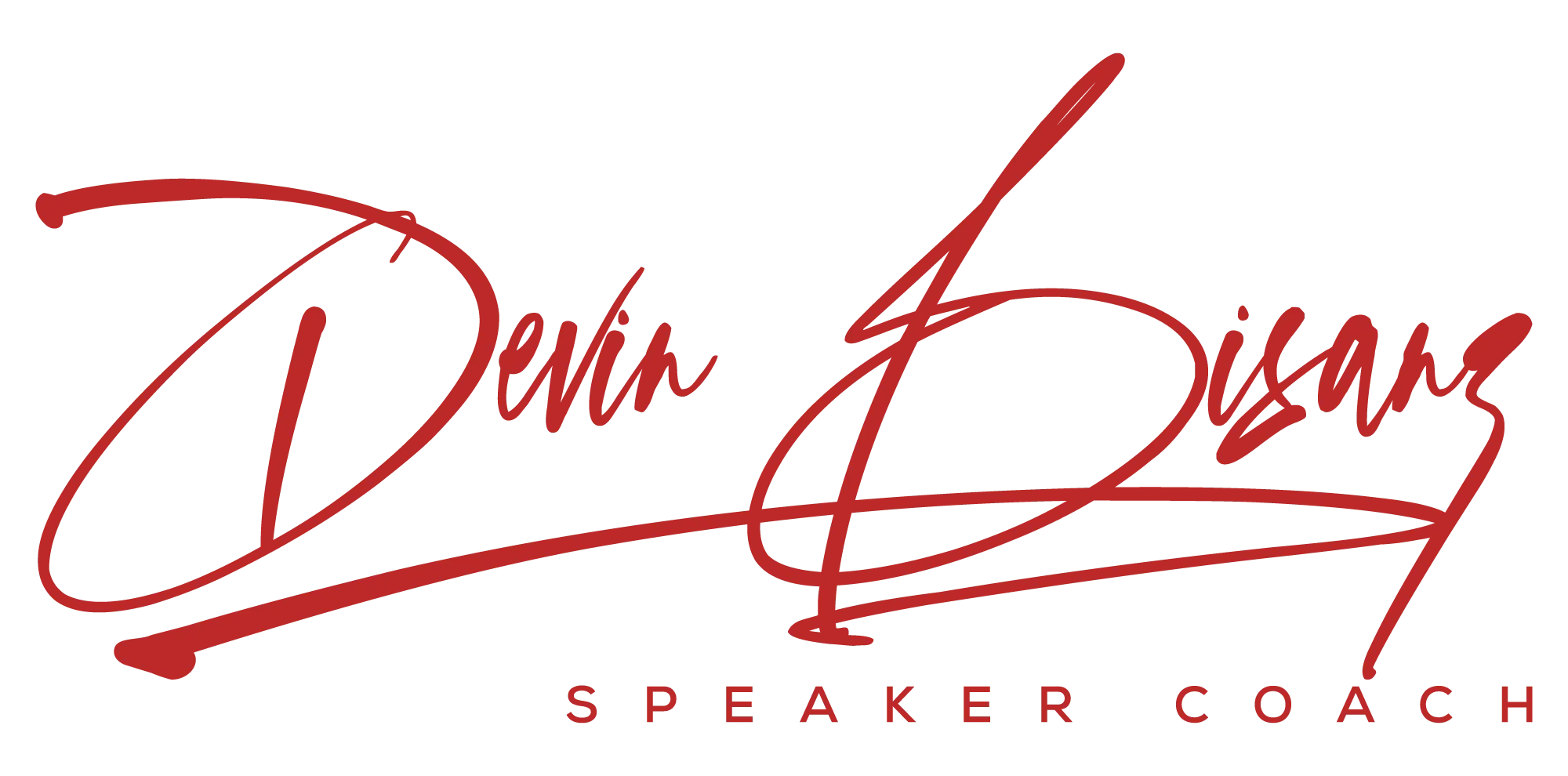10 Public Speaking Tips and Exercises (The Ultimate Guide)
I play guitar, and I remember how hard it was to learn simple tricks like a hammer on. I sat alone for hours plunking on my guitar. Years later and I’m still uncomfortable playing and singing in front of strangers. Anybody who plays an instrument knows how much effort it takes to learn that instrument. You sit alone for hours, practicing; of course, you might agree that it works the same for anything. If you want to learn math then you start by counting bananas 1, 2... if you learn a new language then your first step isn’t entering a speech contest.
Then why is it that you are expected to learn public speaking in front of an audience?

Students are expected to present in front of classmates with ZERO formal training.
That’s crazy because students grow up fearing things like interviews, sales, wedding speeches, and funerals.
Fearful speakers avoid negotiating more pay, pushing for promotions, or landing a hot date. What blows my mind is that so many people think public speaking happens in front of an audience. It doesn’t, it happens every time you speak out loud.
Technically, if you have public speaking anxiety then you would avoid speaking to family and friends.
Lucky you, I'm about to break down 10 public speaking tips everybody should know. My hope is that you participate in the speaking exercises and enhance your journey as a leader. Learning to be an effective public speaker doesn’t require going out of your way to learn. You simply practice new ideas as you speak to the people you already talk to; you’re going to have that conversation anyway.
Speaker Secret #1: Catch Your Breath
Common sense, right?
Well, you wouldn’t believe how many speakers hold their breath when they are scared. You can tell when a speaker’s mind goes blank, or if you hear a speaker's voice cracking, that they're holding their breath.
When I see this happening I always say, “Take a deep breath, common, breathe in, hold it, and breathe out through your mouth.”
I had this one student, smart kid, wealthy, raised with the best coaches in everything. You would think he'd be pretty confident. I picked him out of a group, brought him on stage and promptly asked, “Doug, what is something that makes you lose track of time?”
He was supposed to answer the question using the WIMPS formula we just talked about.
I saw him gasp and then stand with a thousand-yard stare. He froze, and I’ve seen this happen hundreds of times, so I said, “Breath with me, breathe in, fill those lungs.” I breathed in heavy and he took a deep breath.
I said, “Now push it out with power and hold it.” He did, but he was in so much shock he put the audience into shock. I had to tell us all to keep breathing. Finally, I said, “On a scale of 1-10, 1 being the no fear and 10 being scared to death, how scared are you right now?”
“TEN!” He shouted as if he were 100 years away from me.
Public Speaking Breathing Exercise:
Practice breathing exercises as you go about your day.
Breathing is your most powerful weapon when it comes to influencing others. In my book; The 30 Second Friend, I tell the story about the time I learned a breathing trick (pace others breathing).
"I laid beside my wife as she slept. I breathed at the same rate she did for at least 8 minutes. Then, I started breathing deeper and my wife’s breathing went deeper. I was shocked so I started breathing shallow and after doing this for a few nights in a row and crazy happenings I was almost able to wake my wife out of her sleep! She snorted and rolled over. I was controlling someone else’s breathing simply by breathing along with her!"
Get in the habit of watching people breathe, watch their shoulders, be discrete, breathe along with babies and pets. Get good at pacing people's breathing, and then lead them somewhere else WITHOUT saying a word. You can make an angry person calm down, or raise the energy of a lazy person, all with your breathing.
If you don’t believe me then you are the perfect target for advertising.
Do this:
Take a deep breath in through your nose using your belly, and as you breathe out focus on belly breathing as you count to 10. When you get to 10 make sure you are out of breath.
Now, do the exercise again and this time count to 20. Speak at a steady pace and make sure you use all your breath.
Do the exercise again and count 50.
When you are walking or in the shower practice this exercise.
How will it pay off?
When you are in front of an audience, you want your breathing to be paced like that of a saxophone player. Sometimes you want to breathe fast and get that story out, sometimes you want to breathe slowly for the melody. Incorporating purposeful songs like breathing while you speak will unconsciously put you in control.
Fact: when audiences laugh together, they breathe together.
It’s called rapport; a close and harmonious relationship in which the people or groups concerned understand each other's feelings or ideas and communicate well.
Speaker Secret #2: Vocal Variety Is Your Friend
Now that you know how to breathe you will sound like a professional, correct?
Almost, you have the start to a harmonic voice. You must practice vocal variety to sound like a pro. You must articulate your words. You must speak slowly and quickly. You have to know when to make a command and when to ask a question.
Say the following phrase out loud, as it is written.
You must take action now?
Does that sound confident? I hope not, yet many speakers who are nervous end on a high note and kill any hopes of influence. I’ve made this mistake many times while asking girls on a date. I was scared so I said, “I really like YOU?”
They chuckled and said, “You're such a good friend!”
Be confident with your breathing so that you can be confident with your voice when it matters most.
Let’s put our breathing and voice into action. Here is a vocal warmup I do with my students. Do it now, wherever you are. Hopefully, you are in a public place because you’ll realize that you can do this in public and nobody cares, especially if you live in the city. I get the people around me to do it with me. They love it or hate it. I enjoy both responses.
You can free up a lot of mind space when you stop worrying about judgment and start thinking about public speaking improvement.
Do this:
Yawn. Bigger Yawn
Warm-up our lips, bppppppppppppppppppppppp
Tongue, push out and in.
Say, “Yayayayayayayaya” while you pull your chin.
Head roll, head roll the other way.
Say: Butikabutikabutikabutika
Say: Munigamunigamuningamuniga
Say: YayayayaYEE, yayayayaYOU, yayayayaYAY, yayayayaYO.
If Peter piper picked a peck of pickled peppers, a peck of pickled peppers peter picked. If peter piper picked a peck of pickled peppers, how many peppers did peter piper pick?
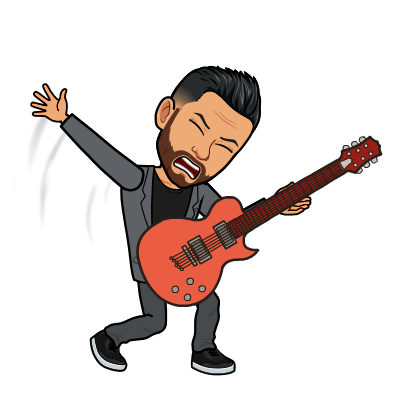
I get asked this question a lot.
What to do if I am a naturally quiet speaker?
I get a lot of quiet talkers. We do an exercise where I stand close so I can hear them, and then I back up and make them talk louder. Then I back up more and more. We do this public speaking exercise 10 times over three weeks and 90% of the time a speaker will speak louder just to get me off their back.
Here is a trick that you can do from home to test your speaking range. Set your phone on the table with voice record on. Talk normally from a few feet away, just ramble something. Then back up few feet and do it again. Tell a story about your favorite childhood memory. Back up three more feet until you get 20 feet or further from the phone. You’ll hear how hard it is to hear yourself. You have to raise your voice.
Speak up, people will thank you for it.
Speaker Secret #3: Facial Gestures MATTER
Look at the following faces and guess what emotion they are feeling.


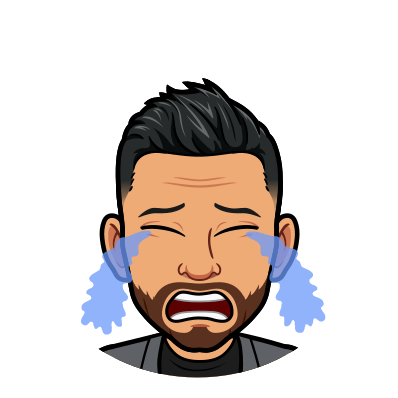
If you guessed angry, happy, and sad then it’s obvious what these faces are saying. Yet so many speakers get on stage and don’t even crack a smile. What are they saying with their face?

I enjoy teaching speakers the SEE factor:
Smile
Eye contact
Energy
Smile. think about it, you smile when you meet a friend, correct? And you want the audience to be your friend, right? Great, smile.
Eye contact. You make eye contact for one reason: trust.
Energy. If you are the speaker then you set the bar with your energy. Even if you don’t say it, the audience FEELS your energy.
Public speaking is an art
One mistake many speakers make is they wear their hearts on their sleeves. If their having a bad day, or they didn’t “prepare” well enough, they tell the audience.

Never tell the audience you didn't prepare or you're nervous. They'll figure it out on their own, OR maybe not. And don’t lie either: alter your state, change the channel, get into the zone, put a smile on your face.
The easiest way to change the channel is to raise your frequency. I like to imagine an energy dial nice and big in my mind. If my energy is low then I imagine spinning that dial-up, up, and up, until white light beams through you.
I can raise my energy right now and so can you. Do it, just for fun. Imagine yourself running super-fast, lifting a house, jumping over the moon. Feel it.
When you speak to people you want to say the same thing with your face as you do with your words, and body. People rarely enjoy your company when you say a different thing with your face and body than you do with your words. Have you ever met someone who slouches toward you, their head is down, and bags under their eyes? You say, “How is it going today?”
“It’s really good,” they slowly respond while looking down at the floor.
But does it look like ‘it’s really good?’
Do this:
Watch an influential YouTuber who does a lot of close-up shots and turn the sound off. My bet is that you’ll almost guess what the YouTuber is saying. Now, do what they do.
When you speak people read your lips, watch your face, and study your body language. If any element is out of align then you send mixed messages. You lose trust. Most people will have no clue why they don’t like you. They just don’t, and it’s not their job to know. It’s your job to know because you are the expert communicator. You are a biofeedback unit of everybody you talk to. If they are down, then you go there and bring them back. If you are down, then go there and bring yourself back. Get in the zone.
Public speaking practice
I’ve spent hours watching YouTube, TED talks, and news anchors with the sound off. Unlike YouTubers, news anchors use little facial gesturing, BUT, watch them blink and you’ll be able to tell if they’re comfortable with the subject. TED Talkers vary and here is a fun fact: there are TED Talks about TED Talks, and one of the TED Talks talks about the number of gestures the most viral TED Talkers use. It's something like 465 hand gestures in an 18-minute talk!
The least viral speakers used 250 or fewer hand gestures.
But we are talking about the face?
Yes, the most viral Ted Talkers also use exaggerated facial gestures. Their body language matches their facial gestures and words.
My point is that every word and action matters.
You would think every TED Talker would want to know what made other speakers go extremely viral. They could do the same and increase their chance of going extremely viral.
I’m going to pull a slide out of my training program, and I want you to go along the slide and make the same gestures, in the same way as the person in the picture.

Next time you are telling a story make your words match your voice, match your facial gestures.
There is an old saying that goes, “Speak with purpose!” When you speak with purpose you send the same message with your entire body as you do with your words.
#feelyourwords
Speaker Secret #4: Your Hands And Arms Are a Weapon
Okay, so you have your breathing down, your voice flows like a song, your face says the same thing your words do. Now, what do we do with the rest of our bodies?
Let’s start with our hands. And before we go on, there is one class of speakers who is exempt from some of these secrets: comedians.
Comedians deliver punchlines and sometimes those lines get bigger laughs when you have no expression.
Most people who want to learn public speaking do it to share information or inspiration. I suggest learning a bit about humor. Google jokes and writes out the good ones. Then, buy the book called Comedy Made Easy by David Lovett. In that book, there are 125 joke templates that you can use to beef up your funny.
That being said, some of the biggest names in comedy use an insane amount of body language and hand gestures. When I think comedian who uses big gestures, I think,
Kevin Hart.

Your hands are a tool. Comedians can keep their tools tucked away in his or her pockets, but you can’t. You have to pop your hands out and use them. You have to practice using your hands to explain every single point you are making. While you read, think about how you would explain these words using your hands. Here are three tips to using your hands:
1. Work with both hands together
2. When your hands go up your energy goes up
3. Practice standing in power poses between gesturing
Do this:
Imagine holding a basketball, and while holding the ball move it to your right. Now left. Bring the ball back to the center and move your hands around the ball as you read. Put the ball above your head, and now put it down low.
The point of the exercise is to keep your hands working together. It’s not one hand in my pocket and the other one fist-pumping. It’s two hands fist-pumping or two hands in my pocket. Again, if you want to see the difference watch a speaker with the sound off.
Find a speaker who speaks with one hand and without the sound, you’ll get a partial message. Now, find a speaker who speaks with both hands working together and you’ll almost know what they’re saying without hearing a word. At the very least you’ll know what they’re feeling.
Look at the following picture and notice how the hands are working at the same level. The only pose difference is the thinking pose; but then again, we know what the body is doing.
A great book to read on body language is Winning Body Language by Mark Bowden. The takeaway message for me was about what your hands say when held at different heights. For example; when your hands are to your side, you’re telling people to go to sleep. When your hands are around waist level you are suggesting supreme confidence. When your hands are at or above shoulder height you are in the excited posture. You are suggesting maximum energy.
When your hands go up your energy goes up and your voice goes up.
Do this: pretend to hold that ball again, hold it at chest level and say, “I am funny.”
Now, hold it at head level and say, “I am funny.”
Now, hold it above your head and say, “I’m funny.”
You may not notice it, but your voice and energy go up when your hands go up. This is important if you’re looking to inspire people because you have to set the bar as a communicator. You have to show people where you want them to go, and how to get there using the road of least resistance.
Experience shows that the path of least resistance is to show rather than tell.
Practice power poses between gesturing.
Great communicators move between powerful stances, and vulnerable stances. There is a time when you want to have your hands crossed in front of you, and there is a time when your hands are tucked away in your pockets. Practice moving between different power poses (hands above head, hands on hips, fingertips touching in front of belly button, hands clasped behind back, arms crossed) while having conversations with friends and family. Do this consciously for a few weeks. Consciously sit and stand straight.
In summary; work with both hands together, when your hands go up your energy goes up, practice standing in power poses between gesturing. In fact, practice a power pose right now. While sitting or standing put your hands behind your head and lock your fingers. Hold it for one minute.
Speaker Secret 5: Use Speech Structure
The easiest way to help someone overcome a fear of public speaking is to give them structure. You give them a template, they fill in the blanks and BAM, they enjoy public speaking. I have speech structures for impromptu speaking all the way up to keynote speaking.
Here is the most popular speech template in the world.
The 3-Point Speech:
Introduction
Point 1 __________
Point 2 __________
Point 3 __________
Point 1 (yes, repeat the point)+ supporting story
Point 2 + supporting story
Point 3 + supporting story
Summary
Closing remarks
But before we write the speech we have to know what to write about.
That's why we brainstorm. I start all students off by writing an icebreaker speech. We do a mind map; you put your name in the middle of the paper and then branch off as many points about you as you can think of. Refer to the picture below.
What blows my mind is how many students young and old can only come up with 10 things or less! All the great leaders do it. How you encourage you, is how you encourage those around you.
Here is a screenshot of my icebreaker example mind map:
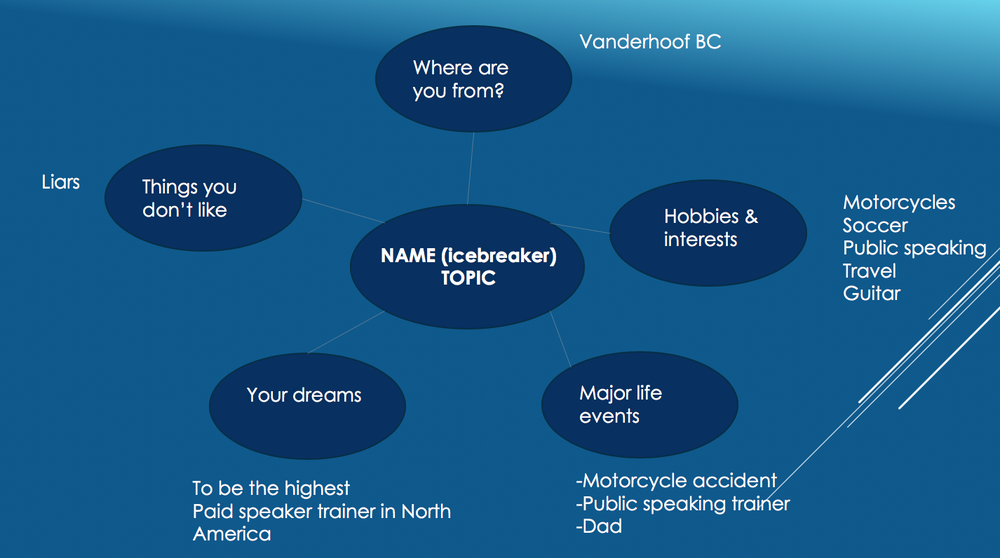
Pro speaker tip: do research in the brainstorming phase of your speech. It'll save you on the number of speech rewrites. Research facts, little-known facts, fables, jokes, and stories related to your topic.
If you have an upcoming Keynote you might be the expert, but what else is going on in your industry? Who are the biggest hoaxes, what weird science is happening? Who has the biggest objections and what are they saying?
If you have a wedding or funeral speech coming up, then brainstorm everything you know about the person you are talking about. Spend a few days remembering all the stories you can. Then, research jokes or other speeches.
The internet is littered with good, bad, and ugly speeches. A mistake many speakers make is they avoid watching other speakers. I had a student; April, and she didn’t like watching speakers because they intimidated her. That’s not a very helpful way of framing public speaking.
I helped her see things differently as we learned to watch speakers with purpose.
Now, it's time to write the speech, this is a simple outline that you can use for any style of speech.
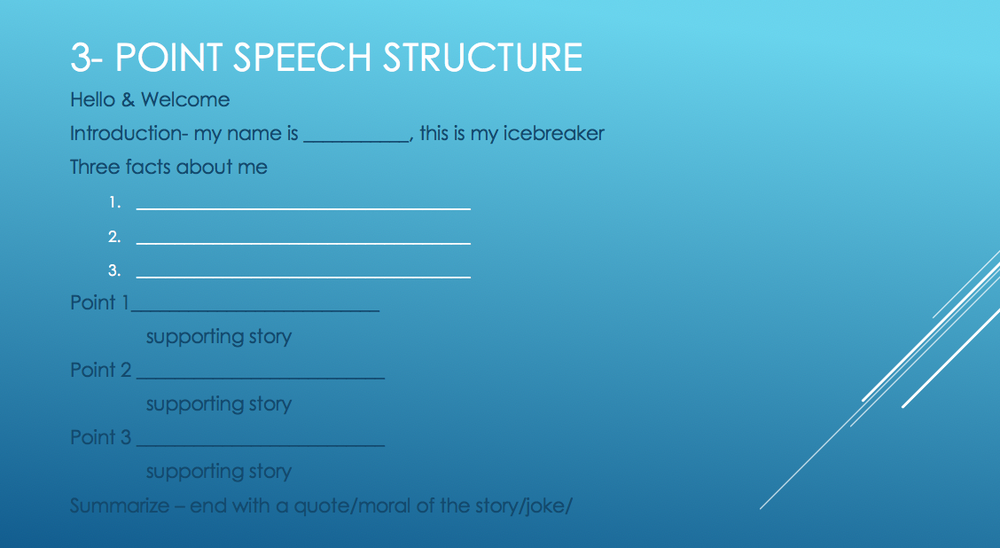
Speaker Secret #6: Get to The Point
Here are my Top 10 Ways to Get to The Point
1. Avoid stories that include a long backstory.
2. Avoid details. Only include story highlights.
3. Time yourself- 2-minute stories without a point/moral/lesson/laugh, is a looooooong story. Too long.
4. Record yourself and then listen to the recording. If you’re bored the audience is bored.
5. Build stories up to a climax and then say, “My point/moral/lesson is."
6. If you can replace a story with a fable, then do it.
7. Insert jokes or lessons into stories. You can be telling a story and then say, “I’m reminded of a joke…”
8. If the story doesn’t directly relate to your message, avoid using it.
9. If you're speaking at a wedding, stick to the 3-point speech even if you have 4 amazing stories. The audience will thank you for it. Save the last story for an open mic if there is one.
10. Think about the audience, what’s in it for them?
Speaker Secret #7: Tap into the power of YOU
Abolish negative thinking and break the chains of your fear. Today you will enhance your life and go to the next level. You are connected to universal life force energy. You were designed for greatness.
My wife calls it preaching, but speakers are preachers. You want the audience to learn something so put them into the picture; replace I with YOU. The problem I find with speakers is they insert powerful YOU statements into their speeches and then they read them with little energy.
Take the following slide. It's a slide I make students read first with no energy, and second with as much energy as possible. I’m talking like almost yelling, put your hands up at shoulder height and put all might into the words. Record yourself reading both ways I can guarantee you that you will FEEL THE DIFFERENCE.
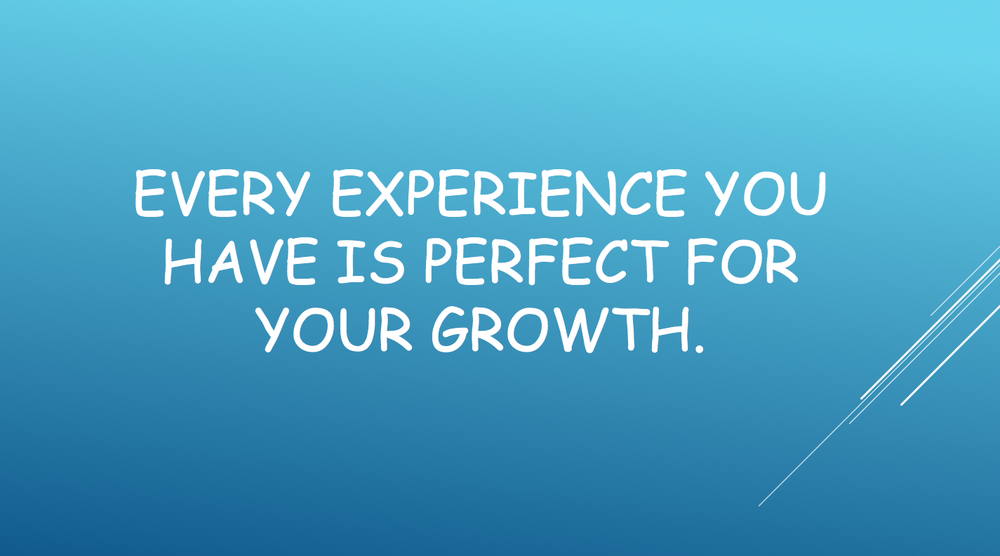
I've been in arguments with adult speakers because they read the words plainly, so I stop them. I say, “I don’t believe you. Read these words like these are the most powerful words on the planet! Do it again.”
I make speakers read the same sentence over and over until they get so mad, they yell out the words in anger.”
“Bam,” I say. “Now I believe you!”
You have to have breakthrough moments if you want to get anywhere in life.
Speaker Secret #8: Learn how to BOMB and MOVE ON
One day I read an article in my news feed about researchers who studied comedians. One of the takeaway lessons was how a comedian handles comedic risk.
Comedic risk: the risk involved when telling a joke or doing something that you're not sure is funny or not.
You see, in normal human life, a kid tells a joke that doesn’t make anybody laugh, and they think that went horrible. Now, let’s say a kid repeated 10 jokes over time, and 9 of them went bad. In my experience, two things happen next: one, they stop telling jokes, and two, they make excuses like, “I can’t remember jokes.” This goes all the way into adulting.
A professional speaker once paid me a compliment on one of my jokes before mentioning she doesn't tell jokes. She said, “I find humor in the moment.”
I thought it was too bad because there is an easy way to be funny on purpose. You have to think like a comedian. When a comedian takes a comedic risk and it bombs. They barely notice as they move along to the next joke. What stops you from doing the same?
Joking aside, you wouldn’t believe how many adults have a fear of public speaking because they bombed one “important” speech in high school.
For the record, I’ve bombed hundreds of speeches. I once brought a live potted flower in front of an audience and pretended that I was a plant psychologist. As I talked to that plant 20 people watched and nobody laughed. I still did the whole bit, 5 minutes of people begging me to get off the stage.
Life goes on as you learn the art of public speaking.
The easiest way to get a laugh is to use exaggeration:

Similes/metaphors/comparisons.
One speaker talked about meeting Kobe Bryant. She said, “He was as tall as a mountain!”
Another speaker talked about getting coronavirus, she said, “Getting coronavirus is like being a fish out of the water!”
#instantentertainment
My challenge to you is to practice exaggerating everything for a couple of days.
A couple of examples I use frequently:
When I leave for groceries I shout to my wife, “Okay, I’ll see you in two days!”
When I pick up the French Bulldog I say, “Geez Hercules, what are you weighing in at, 200 pounds?”
When I put the trash just out the patio door I said to my wife, “Don’t worry, I’ll take it to the bin tomorrow. Or the next day!”
Exaggeration is the easiest way to add entertainment to your speech.
Give it a go, and if it doesn’t work then excellent! Do it 10 times until you can do it on purpose. You never know when you need to access this skill while speaking.
Speaker Secret #9: Tell Stories
I recently wrote a blog on how to tell better stories. I follow a 10 step storytelling method and the stories that students produce are amazing. Some stories are fictional like the one about the thief who got mixed up with a love interest who was a cop.
I’ve heard stories about butterflies, Covid-19, new beginnings, losing a friend, and you name it. Take a look at the infographic example and see what kind of a story you can come up with.
Note: the story I wrote is far from life-changingy76, my punchline hasn’t made one student laugh yet! BUT I won't change the story until I have to update my program. Remember; bomb, and move on.
The point is that you talk to the senses of feeling, hearing, seeing, and olfactory.

In summary, every story should activate the senses and always include dialogue.
Avoid saying, “Dorothy was so mad!”
Say, “Dorothy was fuming when she ran to me and screaming, ‘You’re going to regret this decision!’”
When you add dialogue, you add spice to your stories.
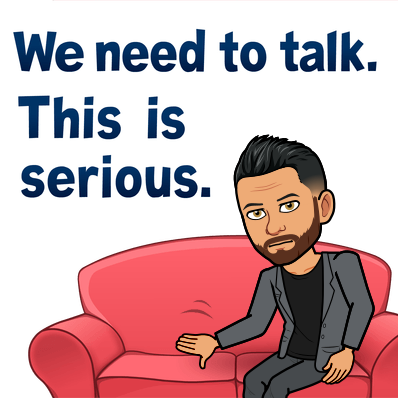
Speaker Secret #10: Quote the Greats
I like to call it stealing juice. You use other people’s credentials to make your point, or if you’re writing a speech for a wedding or funeral (god bless) then audiences love hearing things that person said.
When my aunt passed my uncle asked me to speak. I was honored, I went to work on a mind map and remembered a joke my aunt told me as a kid. I was somewhere around 13, my mom dropped me off for a visit, and when my aunt pulled up, she said (and I can hear her voice) “I heard a joke earlier, but it has kind of a bad word in it. Would you like to hear it anyway?”
“Yes,” the audience said and I was nervous to tell a joke at a funeral, so I wrote it on a piece of paper.
The joke crushed and I always quote my aunt and people love it. Simple.
Or you can quote the greats, Tony Robbins said... Justin Bebier said... Einstien, and I quote... Sr. Suess said my favorite, "Why fit in when you were born to stand out?
In summary, I hope you enjoyed this top 10 list of speaking tips. You can get the shortened version below!
“People will forget what you said, people will forget what you did, but people will never forget how you made them feel.” - Maya Angelou
